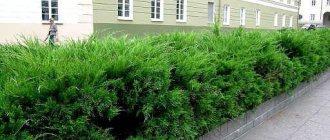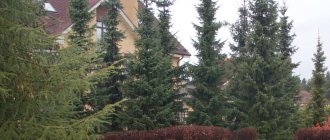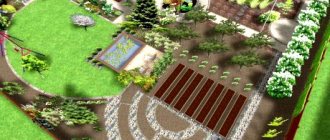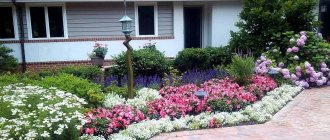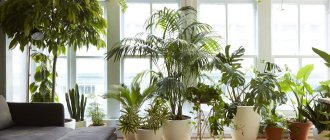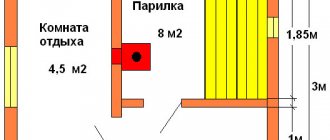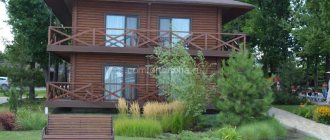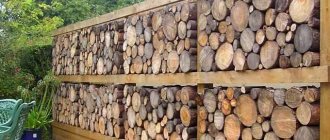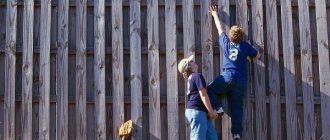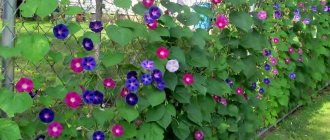Heavily shaded areas can be found in almost any landscape - be it the area on the north side of the house or, for example, under a massive oak tree in the far corner of the garden. It is also common to find forested areas where large oaks, birches, pine trees or other tall trees grow. But even in such situations, there is no need to allow the forest to dominate the garden, because smaller trees with beautiful flowers and showy foliage can still be planted underneath them. For this you will need breeds that can grow normally in the shade. Some species in conditions of strong shading may not reach the optimal height and may not show abundant flowering or fruiting, but at least they will not wither away or die there.
8 Trees That Can Grow in Full Shade
“Shadow” is a relative concept
First, let's look at what light levels exist from the point of view of plant agricultural technology. The terms used to describe the sunlight requirements of a particular crop quickly become familiar to anyone who works with plants, as they are usually listed on the label that comes with the seedling.
They include:
Full sun . For a site to be considered full sun, the plant placed there must receive six to eight hours of direct sunlight per day, with maximum light occurring between 10 a.m. and 4 p.m.
Full sun to partial shade . This suggests that the plant can tolerate a wider range of conditions. And it can grow both in full sun and in partial shade (see next point).
Partial shade/partial sun/partial shade . These terms are used interchangeably to refer to the need for four to six hours of sun exposure daily. It is preferable for the lighting to be most intense during the cooler morning hours.
Spotted shadow . Dappled sunlight is similar to partial shade, and is created when sunlight filters through the branches and foliage of deciduous trees.
Full shade . This term does not mean that there is no sun at all in such places, because very few plants can tolerate a truly complete absence of sunlight. Plants that can grow in full shade are those that can survive four hours of full sunlight (mostly in the morning or late afternoon). Full shade is also called conditions when the plant remains in patches of sunlight during the day, that is, diffused sunlight.
Important! Thus, when choosing a plant for shady conditions, it should be understood that the term “full shade” does not mean the absolute absence of light (in such conditions, only mushrooms can grow). This only indicates the need for minimal lighting, which the plant will be content with to maintain its vital functions.
Not all trees suitable for shady areas have the same light level requirements. And each tree species has its own range of shade tolerance. Also, remember that not all trees that tolerate shade can truly be called shade-tolerant trees. Many breeds simply have the ability to survive in the shade, but may lose some of their decorative features.
For example, individual trees that bloom profusely in the sun may produce much fewer flowers in the shade. And deciduous trees, which when grown in the sun show very bright decorative autumn colors, in the shade in autumn can produce faded, inconspicuous shades of foliage.
Does it make sense to consider the option of planting fruit-bearing shrubs in shaded areas?
Yes, some fruit-bearing shrubs can be grown in shaded conditions. Let's look at the descriptions of the most unpretentious plants.
Honeysuckle
This fruit-bearing shrub owes its popularity to its hardiness; it can develop normally in shaded areas, it is not demanding on soil quality, and is resistant to polluted air, which allows it to be grown in urban environments.
Today, many varieties of honeysuckle have been bred, so the shrub can have quite large differences in the color of leaves and flowers, and the fruits can also differ in shape and ripening time.
It should be remembered that some varieties of honeysuckle, for example, Honeysuckle, are suitable for growing in good light, while others (Tatarskaya) can withstand moderate shading well.
Honeysuckle is used for single plantings, vertical gardening, and for arranging hedges.
Barberry
The plant is characterized by rapid growth and high resistance to frost. The bushes do not require special care; the plant can withstand even severe droughts.
The leaves of barberry are small, beautifully shaped, green in summer, and by autumn they change color to burgundy.
The Thunberga barberry variety has burgundy leaf color throughout the summer, and the Thunberga Goldalita barberry has golden yellow leaves.
Barberry berries have a pleasant aroma and excellent taste; they are used in cooking, especially in oriental recipes.
Gooseberry
It can be grown in sunny or shaded areas. The plant does not need frequent watering; it easily tolerates short droughts.
During the ripening process, gooseberries acquire a yellow or reddish tint and become translucent.
The fruits are used in cooking; compotes and jam are made from them.
Sugar maple
Sugar maple (Acer saccharum) is best known for its fall color, as its foliage turns bright scarlet in the fall. This type of maple is also considered the best tree for extracting sap used to make maple syrup. This is a beautiful tree for landscaping, and in summer it has carved, bright green, palmately dissected leaves. Other names for the species are rock maple and hard maple . It is used in urban landscaping, as well as in large gardens, as it grows quite tall.
- USDA hardiness zones : 3 to 8.
- Light requirement : full sun to full shade.
- Height : up to 40 meters
- Soil requirements : uncompacted, fertile, well-drained, slightly acidic soil.
Sugar maple (Acer saccharum). © FD Richards
Ferns
Among these plants, one of the oldest on Earth, there are several ornamental garden varieties that are actively used in landscape design. And they prefer shady places to grow. In addition, ferns are unpretentious, frost-resistant, and easy to care for.
In the deep shadow of the fence, you can plant ostrich, kochedednik, maidenhair, kostenets, bracken, multi-row, leafy - see what they look like and select the shape and height of the bush, the size, shape and color of the leaves that are acceptable for your site.
Just do not forget that many ferns are very aggressive and quickly conquer new territories, so they need to be planted in a fenced area, arranging limiters in the soil (for example, by digging slate sheets deep into the soil).
- Everything you need to know about fern before planting it in your garden
Do you need to plant a shady corner in your garden, but you don't know which plant to choose? Of course, fern!
Eastern hemlock
Eastern hemlock (Tsuga canadensis) is one of the few evergreen trees that can tolerate shade. This is a decorative moisture-loving species that can tolerate lower light levels during the day. Eastern hemlock may have several trunks and gray shoots. The needles are arranged in two rows, they are dark green, the reverse side has silvery lines. From a distance, hemlock branches look like spruce branches, but their needles are not sharp at all. The cones are small, no more than 2 - 3 cm.
Species plants are full-fledged trees, while numerous varieties grow in the form of low shrubs of varying habit, including creeping forms. Hemlock grows slowly. In nature, some specimens live up to 1000 years.
- USDA hardiness zones : 4 to 8.
- Light requirement : full sun to full shade.
- Height : by 10-15 years the tree reaches 10 meters in height.
- Soil requirements : rocky to medium soil fertility.
Eastern hemlock (Tsuga canadensis). © FD Richards
What do we have?
Every square meter can be put to good use in any garden plot. Even shady places are planted with vegetable and ornamental crops. This allows you to harvest and improve the space, protect it from weeds that spread fungi and pests. If you know what to plant in the shade at your dacha, you can make the most of the area.
I grew up in the outback and know what a garden is. For the last 3 years I have been the editor-in-chief of a gardening website. Most of all, I prefer to implement new ideas in my garden plot, try different growing methods, and introduce modern methods for increasing the yield. But at the same time, he is a supporter of the “old-fashioned” methods of feeding and treating garden plants using folk methods.
Gooseberries are usually planted in a corner where people rarely go. The plant loves shady areas. That's why he grows.
Tigridia is still rare in gardens. But in vain, because this is an unusual, beautiful flower, an absolute plus.
Many gardeners and gardeners have plants in their plots that are grown as...
Mulberry berries, or in other words, mulberry, were brought to us by Peter the Great. Now this culture.
Who among gardeners does not know Marigolds, or in other words, Tagetes. These are most often annual flowers, but there are also.
This site uses Akismet to reduce spam. Find out how your comment data is processed.
By sending a message, you consent to the collection and processing of personal data. Privacy Policy.
Source
Holly yew, or Japanese
The Japanese yew (Taxus cuspidata) is another shade-tolerant evergreen tree. In fact, it is one of the best evergreens for full shade. The plant is native to China, Japan, Korea and the Russian Far East. This conifer tolerates very dry and shady conditions. It usually grows as a spreading tree or tall shrub. The needles are dark green, flat, non-thorny.
There are many varieties and hybrids of yew. Female specimens develop unusual bumps that look like bright red berries. Caution should be exercised as the plant is poisonous.
- USDA Hardiness Zones: 4-7.
- Light requirement : full sun to full shade.
- Height : up to 10 meters.
- Soil requirements : sandy, loamy, well-drained.
Norway yew, or Japanese yew (Taxus cuspidata). © Texas Tech University Departments
Shade-loving vegetable crops and shade-tolerant plants for the garden
Some summer cottages are located in a forest area and are surrounded by trees.
This makes the sun poorly illuminate the vegetables, which affects the process of photosynthesis, and subsequently the harvest. In order to get good harvests of healthy and tasty vegetables and herbs even in such a plot, you should select shade-loving plants. And, as it turned out, quite a few of them were bred. Such plants feel quite comfortable in low light conditions and produce good yields. If not the entire garden is poorly lit, then heat-loving and light-loving vegetable crops should be planted in light areas, and plants that grow well in the shade should be planted in the shade. If there are trees in the garden, they also cast a large shadow. When planning a planting scheme, this must be taken into account.
Derain alternifolia
Derain alternifolia, or pagoda (Cornus alternifolia) is a deciduous spreading tree or large shrub with multi-tiered branches, wide-conical in shape. The plant looks very elegant due to its pronounced tiering, and the lower tier of its shoots hangs down to the ground. In spring, the tree bears clusters of tiny, star-shaped, creamy-white flowers, followed by small, round, blue-black fruits. Flowering is more abundant when there is a lot of sun, but derain is still one of the possibilities for decorating heavily shaded places. There are also varietal forms with variegated leaves.
- USDA Hardiness Zones : 4 through 8.
- Light requirement : full sun to full shade.
- Height : up to 5 meters, sometimes higher.
- Soil requirements : moist, acidic or neutral, well-drained soil.
Derain alternifolia, or pagoda (Cornus alternifolia. © Judy
Shade-loving and shade-tolerant: what's the difference?
The main difference between shade-loving plants and shade-tolerant ones is that the former do not require direct exposure to sunlight at all. They like to exist in the shadows. But shade-tolerant plants love sunlight, but even without it they are able to grow and develop, although not to their full natural strength and power. Such crops are scientifically called scioheliophytes. Shade lovers are called sciophytes; in nature, this group is the smallest and least diverse.
There are not too many truly shaded areas in the average garden plot. Although many gardeners think differently and mistakenly mistake the corner where the wave can comfortably plant as a dark zone. In fact, the only bad places for planting are the gaps between buildings and the fence, where sunlight practically does not penetrate. But even there, with proper care, you can also grow a fruit tree, for example, a cherry plum or a tall cherry.
Black alder
Black alder (Alnus glutinosa) is a fast-growing, moisture-loving deciduous tree that easily adapts to a variety of growing conditions, native to Europe. The trees have a pyramidal shape. They can tolerate severely waterlogged soils, but will also tolerate somewhat dry conditions.
Alder has beautiful glossy leaves and quite decorative cones and earrings. The smooth gray bark of these plants is especially attractive in winter, when it stands out against the snow. Black alder is able to absorb nitrogen from the air and increase soil fertility through root nodules. Alder trees are also valuable in landscape restoration projects where the soil is severely depleted. Black alder has decorative forms of low growth.
- USDA Hardiness Zones : 4 through 8.
- Light requirement : full sun to full shade.
- Height : up to 5 meters, sometimes higher.
- Soil requirements : well-moistened soil.
Black alder (Alnus glutinosa). © pracbrown
Ate
Let's move on now to the spruce trees. They have half as many species as pine trees - “only” about 50. And even less are sold here! These are common spruce (Picea abies), prickly spruce (P. pungens), Serbian spruce (P. omorica) and Canadian or gray spruce (P. glauca), or rather, their numerous varieties. For the most part, they prefer not to fry in the sun. Moreover, at a young age they can even get burned if you plant them in an open place - just like kids on the beach. This is especially true for Canadian spruce: shade is not just desirable for its varieties - it is necessary. The exception is the prickly spruce: it requires more light. But you are unlikely to confuse it with the others - this is the familiar “blue tree”. Otherwise, the needs of the prickly beauties are similar: they all love moisture. And, first of all, this concerns not the soil, as you probably thought, but air humidity. Spruce trees do not tolerate Wind Blow very well, and they are unlikely to like it in an open field.
Prickly spruce. Photo: www.globallookpress.com
Sumac (vinegar tree)
Smooth sumac (Rhus glabra) and staghorn sumac (R. typhina) are the most common and accessible landscape species of this plant. Both of them grow up to 3 - 5 meters in height and grow as a large shrub or small tree. Sumacs are also well known for their striking bright red foliage color in the fall.
The species can be distinguished by the fact that the branches of the staghorn sumac have a fluffy surface. Most gardeners grow sumac for its colorful fall display. Sumac has beautiful feathery leaves up to 50 cm long, which turn bright red in the fall (there are also yellow and orange varieties of sumac). An additional decoration is panicles of red fruits. The plants are drought tolerant but grow taller with regular watering in the absence of rain.
- USDA frost hardiness zones : 4 to 8.
- Light requirement : full sun to full shade.
- Height : 3-5 meters.
- Soil Requirements: Grows in almost any well-drained soil.
Smooth sumac (Rhus glabra). ©David Charlton
What companion plants can be planted in shaded corners of the garden?
To create beautiful corners in the shaded part of the garden, planting only shrubs is not enough.
You will need to select small plants that will allow you to maintain the decorative appearance of the site throughout the summer season.
Let's highlight the most popular ones and give them a brief description.
Climbing plants in natural conditions are undergrowth plants, so there is no doubt about their shade tolerance. Liana-like ones are used to decorate gazebos, pergolas, and verandas.
Popular plants of this group: girlish grapes, kirkazon and princely. They grow quickly and are capable of forming dense thickets. The attention of owners of suburban areas is often attracted by girlish grapes, the leaves of which acquire bright red-orange shades in the fall.
Ferns, depending on the varieties, differ in size, but their leaves have clear graphics and volume, which allows you to create a background for flowering shrubs.
Hostas are no less interesting in compositions with shrubs.
They can withstand shaded areas. It is noteworthy that the plant is represented by numerous varieties; gardeners can choose bushes from 10 to 60 cm in height.
The varieties also differ in the shape, size and color of the leaves, and the color of the edging. Hostas go well with ferns.
Ground cover plants are planted to create a carpet under the trees. Saxifraga, periwinkle, and lungwort are decorative and grow well in the shade.
Flowering annual crops tolerate shade:
- matthiola and fragrant tobacco;
- geraniums and forget-me-nots:
- rudbeckia.
Bulb crops can also be planted in the shade of trees, because crocuses, daffodils and tulips begin to bloom even before the trees become leafy.
Although most grains prefer sun. in partial shade will take root:
- spreading pine forest and hedgehog species;
- meadow foxtail and turf pike.
Considering which shrubs grow in the shade, we remembered the most popular plants that require minimal care. But in order to get not only decorative greenery, but active flowering and fruiting, of course, you will need to organize proper plant care.
Thuja occidentalis
Thuja occidentalis is an evergreen plant that adds elegance to your garden all year round. It is distinguished by flat, spreading, horizontal “paws” and fragrant dark green needles. The crown of the thuja is conical and consists of short spreading branches. Tall varieties have a dense columnar habit. However, it should be borne in mind that with strong shading, the thuja will have a looser crown, but this deficiency can be partially corrected by cutting.
Thuja occidentalis is most often used as an accent plant, but is also popular for creating hedges. There are numerous varieties of thuja with decorative needles (most often golden), however, this quality of the variety will only be manifested in full sun. In this regard, for partial shade it is more advisable to choose varieties with green needles.
- USDA Hardiness Zones : 3 through 7.
- Light requirements : full sun, partial sun, full shade.
- Height : 2-6 meters.
- Soil requirements : moist, well-drained alkaline soils.
Western thuja (Thuja occidentalis). © The New York Botanical
Are there any benefits to a shaded area?
Definitely yes, first of all - the opportunity to organize a recreation area not in the sun, as an option - building a gazebo or installing a bench.
The range of plants that are used to improve a shaded area is wide, but to get the desired result you will need to take into account:
- soil quality, because most shade-tolerant shrubs grow in deciduous forests, the soils of which are characterized by fertility, looseness, and moisture;
- soils that are too poor will need to be enriched with nutrients; when choosing them, the acidity of the soil should be taken into account;
- level of soil moisture; for shade-tolerant deciduous shrubs it is important that the soil remains moist in hot weather; the need to develop a drainage system for soils that are too wet and heavy. Pebbles or pieces of brick placed at the bottom of the planting holes can be used as drainage.
Taking into account the parameters of the shaded area, it can be wet or dry. To select suitable shrubs, you need to determine the type of shade and select varieties accordingly.
If the shaded area is occupied by large fruit or ornamental trees, then the shade will be dry, because large plants have a strong root system and are able to pump water from the soil, and with it nutrients. Damp shade forms on dense soils in the absence of drainage.
Korean fir
Korean fir (Abies Koreana) is a compact evergreen coniferous tree with a conical or pyramidal crown shape and well-defined tiered branches. The branches are densely covered with short but wide non-thorny needles. The needles are shiny, dark green on top, and silvery underneath. Korean fir begins to bear fruit early. The cones are very beautiful purple in color (up to 7 cm long). Unlike spruce trees, cones on fir branches do not hang, but grow vertically.
There are many varieties of Korean fir, including dwarf ones, as well as plants with yellow or silver needles (“turned inside out”).
- USDA Hardiness Zones : 4 through 8.
- Light requirements : full sun, partial sun, full shade.
- Height : up to 15 meters.
- Soil Requirements : Grows best in rich, consistently moist, slightly acidic, well-drained soil.
Korean fir (Abies Koreana)
Hosts
When talking about shade-tolerant ornamental foliage plants, of course, the first thing that comes to mind is the beautiful hosta. And for good reason!
These herbaceous perennials from the Asparagus family are really very unpretentious and will feel great in the darkest corner of the garden, acting well both as tapeworms and as a decorative frame for many other plants that they easily get along with.
And all - because of the huge variety of shapes, colors and sizes - the dense leathery leaves of the hosta can be tiny and very large, wide and narrow, rounded and pointed, smooth, wavy and “waffle”... And the palette of their colors will please any gardener - dark and light green, olive, dark blue, silver, variegated, with contrasting color borders, stripes or spots, even changing color throughout the season.
- Guide to types and varieties of hostas (names, photos, descriptions)
Bookmark the catalog of hosta species and varieties!
Fir
Fir trees are fast-growing coniferous crops with a pyramidal crown. It is advisable to plant them in sheltered and shaded areas. On clay soils, they must be drained in the form of gravel or crushed stone.
It must be said that fir varieties of coniferous plants for the garden are very demanding in terms of soil saturation with water and its fertility. As for care, the plants require only sanitary spring pruning. In addition, young crops need to loosen the soil.
In the first year after planting, it is better to cover the plant with spruce branches for the winter. No further action is required, since the crop is frost-resistant.
Cedar on a summer cottage
Landing Features
Despite the fact that some types of conifers require special planting conditions, there are general rules for all their types. In particular, the important point is the planting time; for coniferous plants this is the end of April - beginning of May.
As mentioned above, the easiest way to grow crops is from seedlings. The only thing you need to pay attention to is their quality, which is indicated by the following points:
| Earthen lump | Must be whole and packed in burlap. The size of the coma should be one third of the length of the seedling. |
| Needle color | If the seedling is healthy, then the color of the needles is rich and the needles are elastic. |
Brief instructions for planting needles are as follows:
- First of all, you need to dig a hole with a volume slightly larger than the earthen ball of the seedling.
- Then you need to fill the hole with a mound 2/3 of its depth.
- After this, you should place the seedling on the mound and carefully distribute the roots around it.
- Next, you need to bury the roots. In this case, the seedling must be periodically shaken and the ground lightly trampled.
- After planting, the plant must be watered.
- Then you need to sprinkle dry soil around the seedling.
- At the end of the work, the soil should be mulched and sprinkled with peat around the plant.
Here, perhaps, are all the main points of planting coniferous crops.
Pine
Pine trees include plants that primarily grow in Asia and Europe.
As a rule, these are very tall trees with a spreading, wide crown. All species of these trees have needles collected in small bunches, however, the number of needles and their structure can vary significantly between different varieties. The needles usually last for several years and then fall off.
Growing and caring for coniferous plants in the garden, which are classified as pine, is not particularly difficult. The most important thing is to plant and care for it correctly the first year. These trees can withstand severe frosts and heat, however, they are light-loving.
Single color fir
General information
Coniferous plants in garden design can look great both in single and group compositions. In addition, needles are often used to create evergreen sculptures and hedges.
We suggest you read: How to propagate azaleas at home?
Among the advantages of such plantings are:
- Looks perfect at any time of the year;
- Do not shed leaves that need to be removed;
- They do not cause much trouble to care for.
However, before you decide to plant a particular coniferous plant, you need to familiarize yourself with its characteristics and find out what height it can reach. This will allow you to avoid some problems in the future associated with the growth of a tree or shrub for a summer cottage. Thus, the design of a garden with coniferous plants will look harmonious even after many years.
Coniferous crops on a summer cottage
